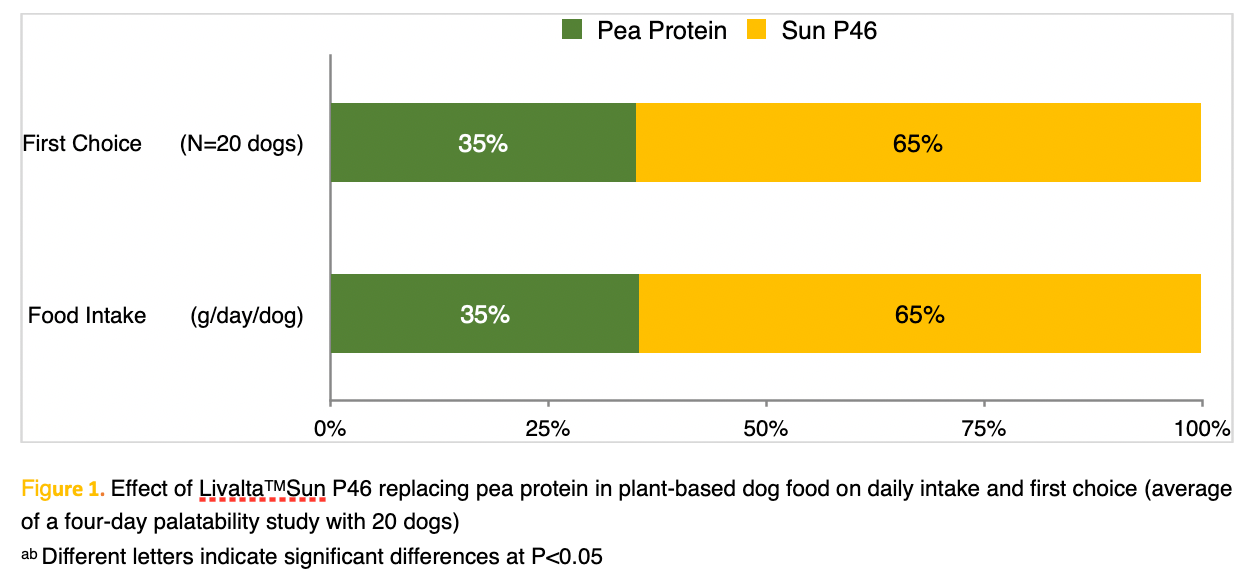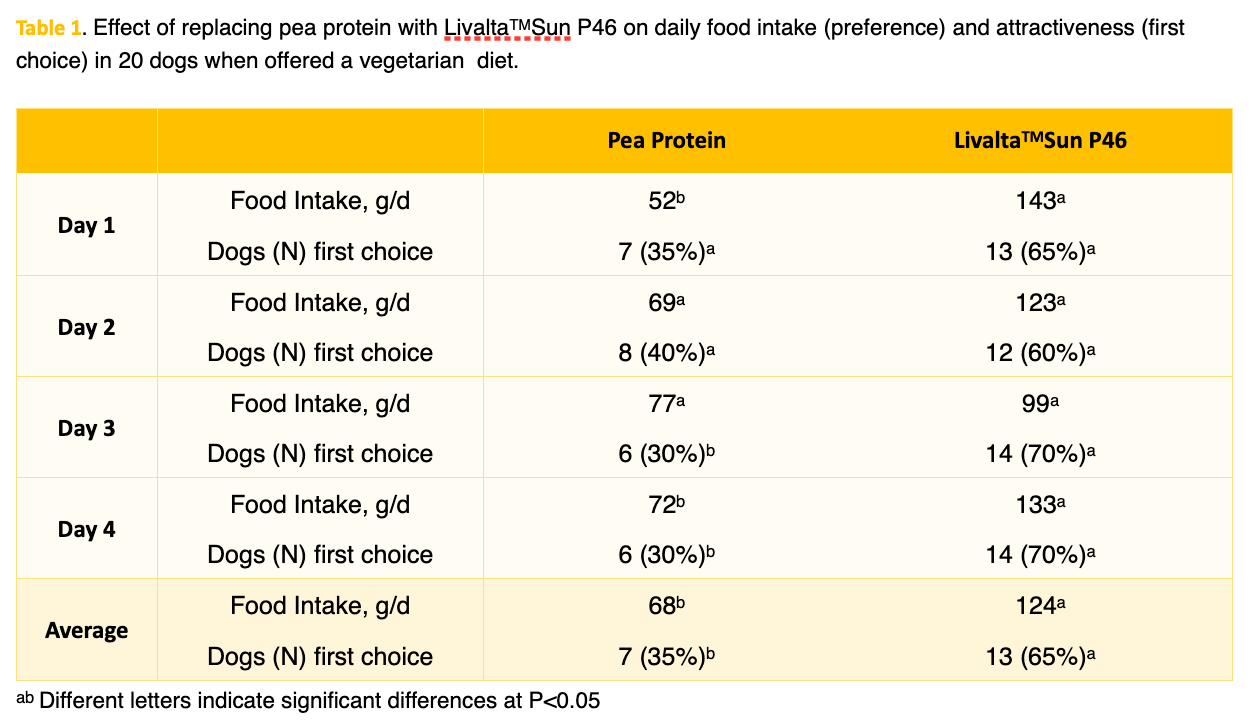Do dogs actually like eating our sunflower protein Livalta™Sun P46? We have talked about the nutritional benefits and the excellent pawprint of our Livalta™Sun P46 before – but we still wanted proof regarding palatability, especially when included in more “challenging” (from a palatability perspective) plant-based diets. The short answer is – yes, they do like eating it and they prefer it compared to pea protein. For the long answer, please continue reading.
We conducted a 2-bowl palatability study at a research institute in the Netherlands to investigate the effect of replacing pea protein with Livalta™Sun P46 in a plant-based dog food on daily food intake and preference with 20 dogs during a four-day study period.
Our results were: Total daily food intake was consistent throughout the study – i.e. the dogs ate the same total amount of food. Replacing pea protein with Livalta™Sun P46 improved palatability (Figure 1, Table 1): when dogs were given the choice between a plant-based diet containing pea protein and one containing sunflower protein, the dogs not only preferred the food containing sunflower protein (first choice) but they also ate more of it (food intake).
We also observed no issues on the dog food manufacturing side: Substituting pea protein with Livalta™Sun P46 produced a comparable pellet quality with regards to hardness and durability as well as water activity as shown in Table 2.
Results

Trial Design
Food attractiveness and intake was determined using the two-bowl method (one bowl of each food with alternating positioning of the bowl at each meal). The food was offered once a day (morning) during four consecutive days for a maximum of 30 minutes. Twenty healthy mid-sized adult dogs of good body and health condition (confirmed by a vet; vaccinated and de-wormed) were used in the study. In addition, dogs with known food consumption addictions (excessive greed for food, fussy eaters, preferences for specific food flavors and/ or textures ) were excluded from the study.

Feed manufacturing: the ingredients were first hammer milled (1.25 mm sieve), blended (45 min mixing) and consequently pre-conditioned and extruded (2x8 mm twin screw, max 130°C head temperature). The final extrudate (10 mm) was vacuum coated (soy oil and 0.8% digest) and dried before packaging.

Please contact us to find out how Livalta can help you responsibly meet your animals needs
Latest news
Livalta develops new, responsible proteins for feed and food using the latest science and technology.!

